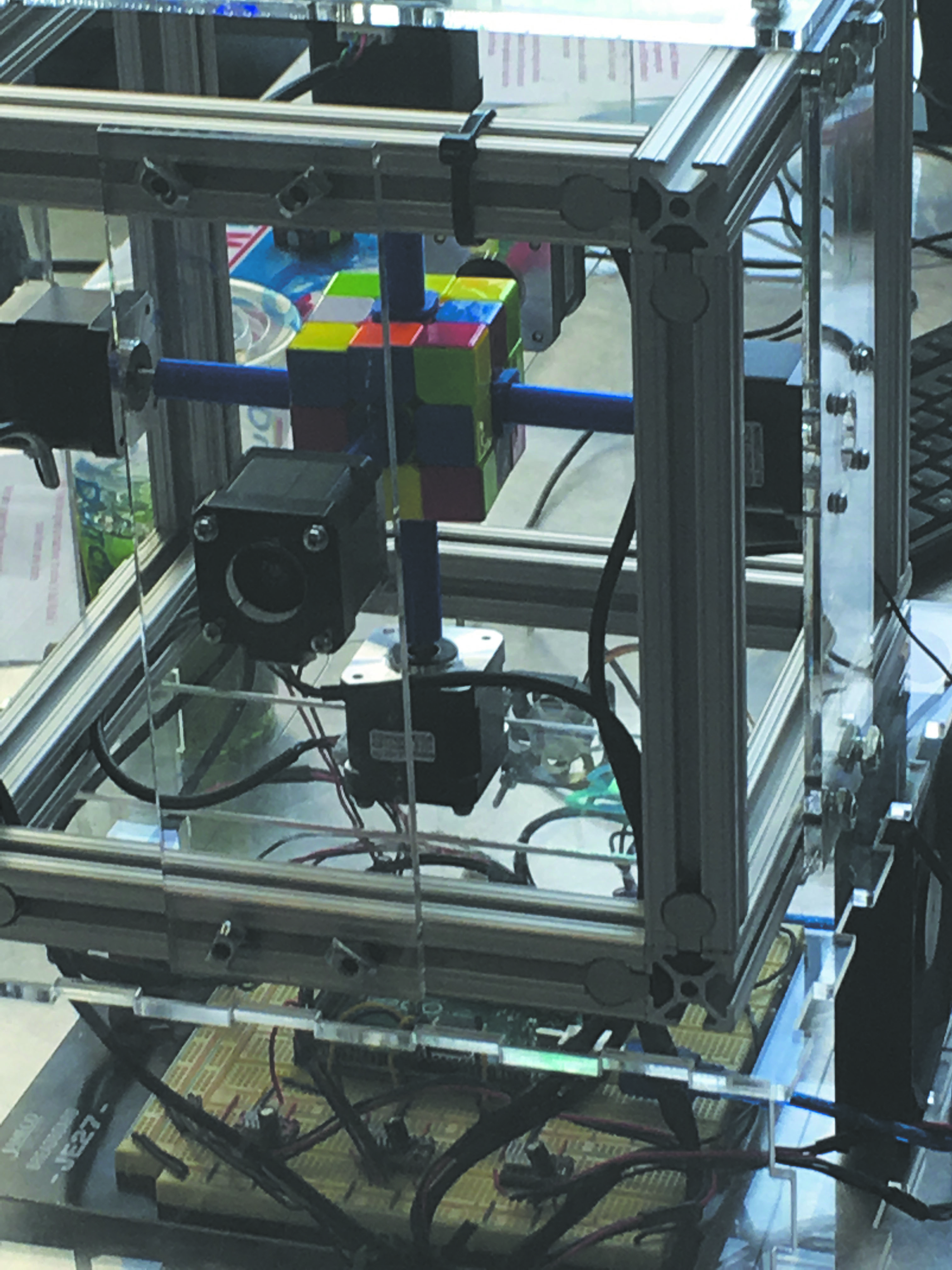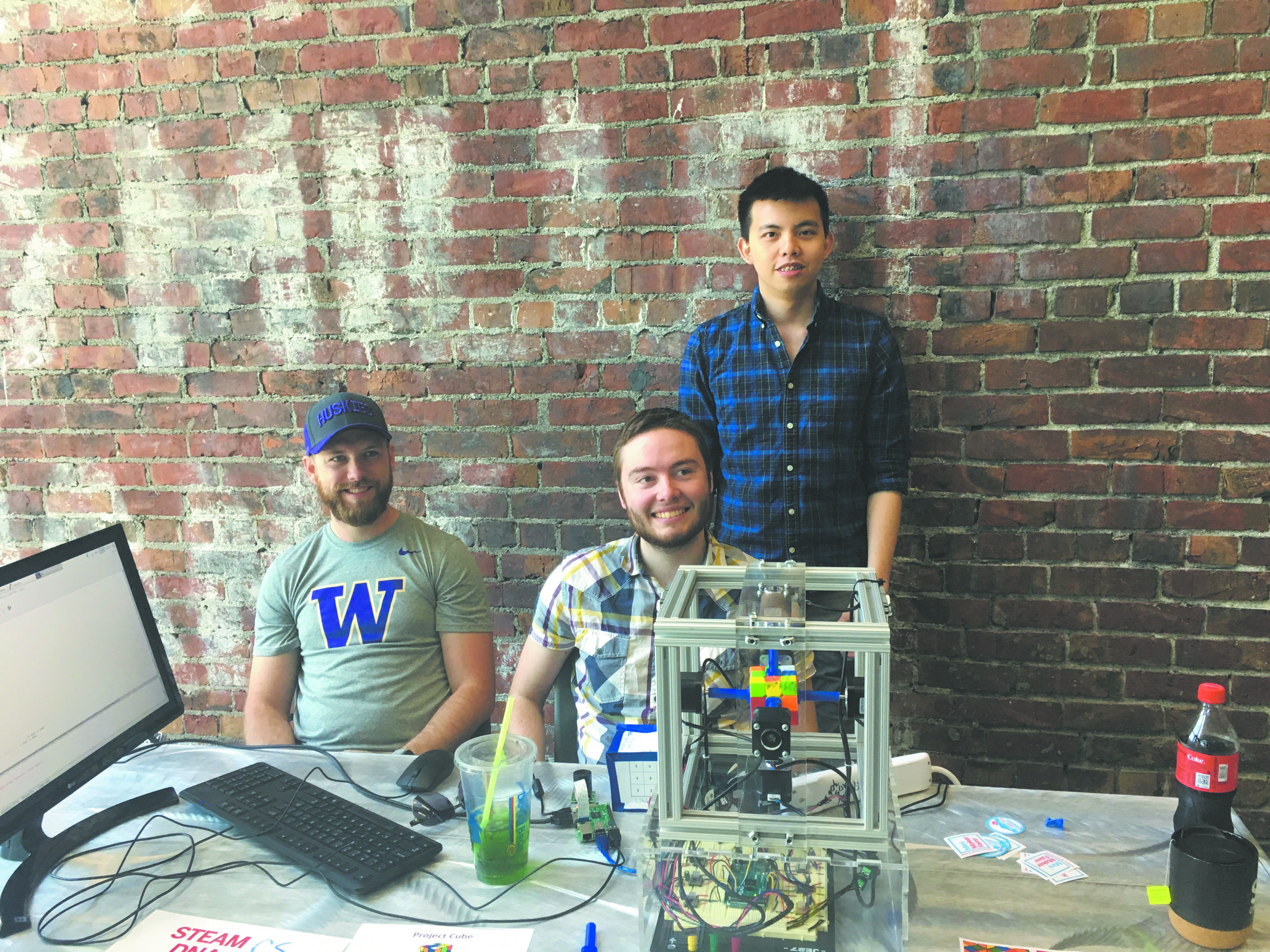RSO collaboration creates Rubik’s Cube-solving robot
“The project itself was difficult to do, and yet all of these students stuck around to a finished result. Even though it is finished, they’re not done, right? They have goals, they know how to make it better, and to me that is amazing. They are an amazing group of students.”
— Katalina Biondi, Institute of Technology Senator for ASUWT
During the Tacoma-South Sound Mini Maker Faire held May 11 on the UW Tacoma campus, a joint registered student organization program showcased their creation: a Rubik’s Cube-solving robot. Project Cube, as it is called, is the product of collaboration between the UWT chapter of the Institute of Electronics and Electrical Engineering, Women in Computer Science, Math Club and HUSCII Coding Club.
Formed in October 2018, Project Cube set out to create a robot made within a reasonable budget, while incorporating their own design elements. Using 3D-printed parts and open source code, the Project Cube team was able to construct the robot in under a $500 budget.
Currently, the robot is able to solve a Rubik’s Cube within four minutes, and the team believes they can get that number down very quickly. Jacob Dixon, an IEEE member who worked on the robot, talked about some of the challenges the group has come across, and how they are moving forward despite a few setbacks.
“We’ve gone through about eight to 10 motor drivers and three Arduinos,” Dixon said. “Those have all been through minor errors, things which seemed like they were not a problem. Maybe there were some wiring problems, maybe some human error. But we learn from those, and every time that we make a revision it just gets better and better. Honestly, it is getting close to a nicely finished product.”
When showing off their robot at the Mini Maker Faire, the team explained that the robot worked at a slower speed to limit any further need to replace parts. They gave a demonstration of the robot manipulating the Rubik’s cube at double the pace they had it, and according to Dixon, a time under one minute is possible.
While Project Cube was giving demonstrations of their robot, other UWT organizations and groups had their own exhibits to show off and engage the public. The Sciences and Mathematics division had an interactive exhibit where you could extract cells from your cheek and see your own DNA. Another group, the IoT Pollution Project, discussed how they could use Raspberry Pi computers to monitor air quality around Tacoma in real-time.
One aspect that Project Cube is proud of is the amount of people they have brought together and the real world experiences that will go on to help students in the job field. Christopher McBride, president of the UWT IEEE branch, discussed the benefits of working on a project like this while still in an academic setting.
“It’s not always easy to organize students, they are busy,” McBride said. “The project is great. It isn’t something too technically difficult. I think what’s more difficult is organizing people, getting them together, getting them to show up to meeting and events. It is really good experience for them. That’s what you’re probably going to do after you get out of school, you know? Thirty percent of it is technical stuff and doing your thing, and 70 percent is emails, contacting people, organizing and working as a team. I think that was the hardest part of the project.”



